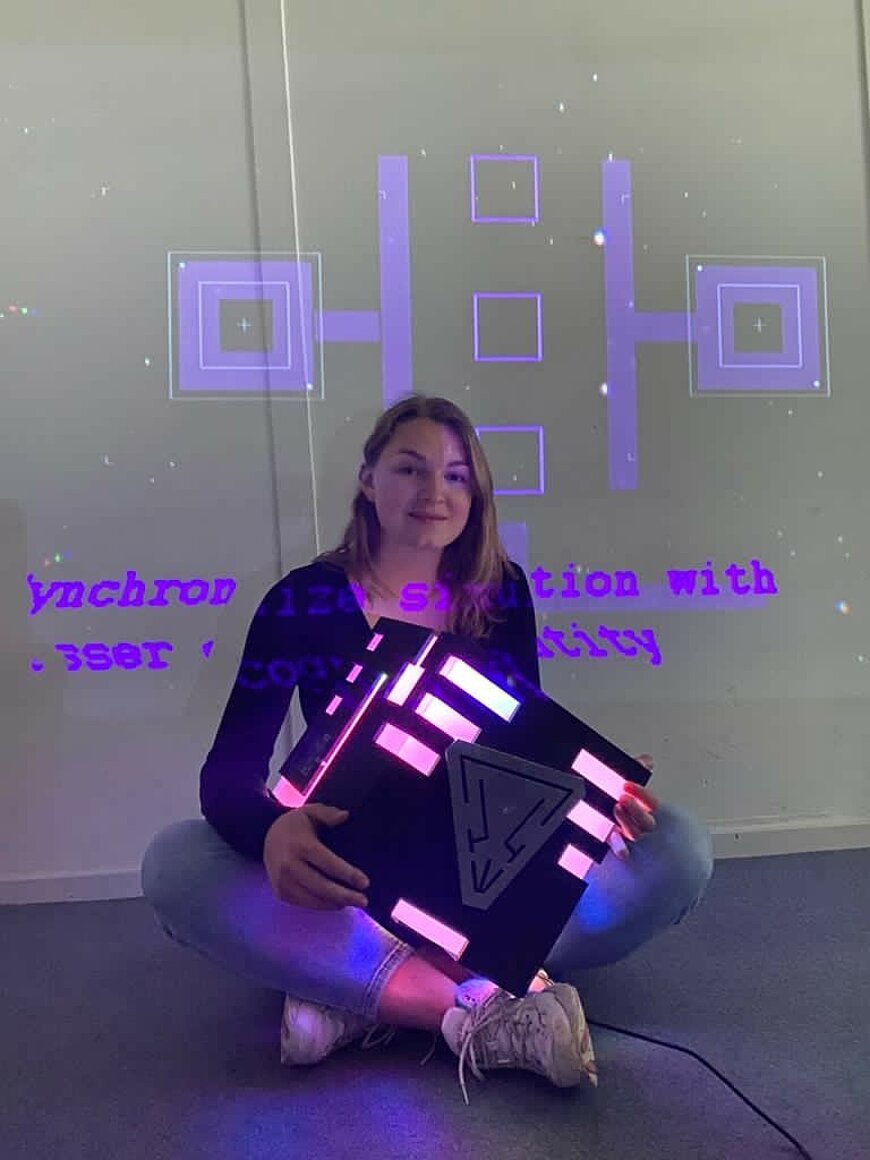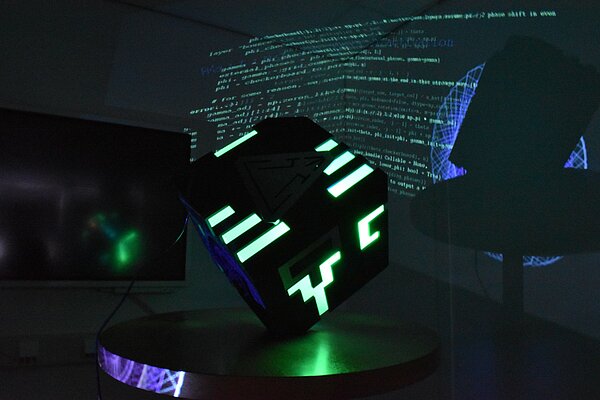Meet our pioneer: Katja van Weert

In Brainport Eindhoven we change the world because here we develop key technologies that change society. We can only do that because of our pioneers. So we’d like you to meet one of our pioneers: Katja van Weert.
Who are you?
I am Katja van Weert and I am 24 years old.
What education are you doing?
I'm doing the first year of the 2-year master student Industrial Design at the Eindhoven University of Technology.
What special project are you working on?
At the moment I'm working on a research project, with the ultimate goal of gathering knowledge for other designers. The theme is playful design. That is a design that is about games or playful situations. It is a form of mixed reality; a virtual world intertwined with the real world. Think of Pokémon Go or Geocaching.
The ultimate goal of the research is to see how the transition from ‘real world’ to ‘virtual world’ affects the degree of empathy in projected Augmented Reality. These are virtual light projections that optically alter the 'real world'. In Virtual Reality (VR), a lot of research has already been done on how to make people slowly merge into the virtual world through a transition (think of a virtual door that you can step through to get into the virtual game world), but for Augmented Reality (AR), very little has been done with this. The interesting thing about this is that while in VR the entire visual field of view receives only virtual information, in projected AR there is always information from both the real and virtual worlds (so if you project onto a wall you see both the wall and the virtual projection). The question this then mainly raises is: how can you ensure that people cognitively integrate the real and virtual worlds, so that a kind of blended reality emerges?
Since the transition in VR works well to stimulate empathy in the virtual world, I'm going to look at whether this is also the case in projected AR. If so, I will look at two different types of transition, a passive transition, in which more and more virtual information is slowly projected, and an active transition, in which the player himself unlocks more and more virtual information by interacting with a control panel. Thus, in the first variant, the player does not influence the transition, while in the second variant the player decides when more is projected through physical interaction with a ‘real’ object. This object is in the same theme as the rest of the game and has several sensors with which the interaction can be measured.

Are you doing this project alone?
It’s in an individual research project, but I have some help from fellow students in this project. For example, with 3D printing, laser cutting or programming. I already know many students who are very skilled at this. I know them through TU/e Innovation Space, but also through Team Ignite, the student team of which I am a member as an HR and designer & researcher.
What would you like to do later on?
I would like to work in the field of events and entertainment. That’s why I’m in Team Ignite, which also focuses on this. What I would like to do is to work in the entertainment industry in the hospitality industry to make a dining experience a very special one. You can compare it a bit with Intelligentia, the ice cream parlour at Strijp-S. I think their themed space is very cool. Dinner in Motion is also very nice. I want to continue working in that trend of combining food and technology. But I would like to go a step further myself. I would like to make something that is interactive, where people have to discover something to create their ice cream flavour or dish for example.
What do you find important about a later job?
I believe in the little pleasures of life. I want to do something that also allows adults to play and discover a little bit again. I want to make people happy. In the study, the emphasis is mainly on finding solutions to social problems, but I also want to do something for the 'average man'.
"The collaboration with all the companies here is really special. There's really a lot of collaboration with technology companies, like Philips. There is a lot of willingness to work together. That's why I find Brainport Eindhoven and the culture that's here really inspiring."
Katja van Weert
What do you think of studying and living in Brainport Eindhoven?
I think it's great. I never really realized that Eindhoven had so many special places, such as Strijp-S. And as far as studying is concerned, it's great that there is so much cooperation between the faculties. At the TU/e you see a lot of studies where you have to make multidisciplinary teams and that is good preparation for the future. The cooperation with all companies is really special here. There is a lot of collaboration with technology companies, such as Philips. There is a lot of willingness to work together. That's why I find Brainport Eindhoven and the culture that hangs here really inspiring. I would also really like to continue living and working in Eindhoven.
What else would you like to tell students in Brainport Eindhoven?
If you also find immersive mixed reality very interesting, then I would like to get in touch with you [LinkedIn]. Maybe we can do something together in the future, for example creating a start-up. You can also follow me on Instagram. I regularly post about my projects there.